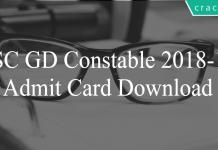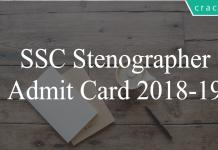Expected Maths Questions For SSC MTS PDF
Download Top-20 SSC MTS Expected Maths Questions PDF. Most Expected Maths questions based on asked questions in previous year exam papers very important for the SSC MTS exam.
Download Expected Maths Questions For SSC MTS PDF
Last Day – 10 SSC MTS Mocks for just Rs. 117
Take a free mock test for SSC MTS
SSC MTS Previous Papers (Download PDF)
Question 1: If X = 0.3 $\times$ 0.3, the value of X is
a) 0.009
b) 0.03
c) 0.09
d) 0.08
Question 2: An equation of the form ax + by + c = 0. Where, a ≠ 0, b ≠ 0 and c = 0 represents a straight line which passes through
a) (2, 4)
b) (0, 0)
c) (3, 2)
d) None of these
Question 3: The fifth term of the sequence for which $t_{1}=1$, $t_{2}=2$ and $t_{n+2}$ = $t_{n}+t_{n+1}$, is
a) 5
b) 10
c) 6
d) 8
Question 4: Reduce 3596 / 4292 to lowest terms.
a) 29/37
b) 17/43
c) 31/37
d) 19/23
Question 5: Reduce 2530/1430 to lowest terms.
a) 47/17
b) 23/13
c) 47/19
d) 29/17
Take a free mock test for SSC MTS
Question 6: The first and last terms of an arithmetic progression are -32 and 43. If the sum of the series is 88, then it has how many terms?
a) 16
b) 15
c) 17
d) 14
Question 7: 29 is 0.8% of?
a) 3625
b) 1450
c) 7250
d) 10875
Question 8: 5*[-0.6 (2.8 + 1.2)] of 0.3 is equal to
a) -1.44
b) -1.08
c) -1.2
d) -3.6
Question 9: Find the value of p if 3x + p, x – 10 and -x + 16 are in arithmetic progression.
a) 16
b) 36
c) -16
d) -36
Question 10: If 9/4th of 7/2 of a number is 126, then 7/2th of that number is …………..
a) 56
b) 284
c) 72
d) 26
SSC Study Material (18000 Solved Questions)
General Science Notes for SSC Exams
Question 11: Find equation of the perpendicular bisector of segment joining the points (2,-5) and (0,7)?
a) x – 6y = 5
b) x + 6y = -5
c) x – 6y = -5
d) x + 6y = 5
Question 12: Find equation of the perpendicular to segment joining the points A(0,4) and B(-5,9) and passing through the point P. Point P divides segment AB in the ratio 2:3.
a) x – y = 8
b) x – y = -8
c) x + y = -8
d) x + y = 8
Question 13: The co-ordinates of the centroid of a triangle ABC are (-1,-2) what are the co-ordinates of vertex C, if co-ordinates of A and B are (6,-4) and (-2,2) respectively?
a) (-7,-4)
b) (7,4)
c) (7,-4)
d) (-7,4)
Question 14: What is the slope of the line parallel to the line passing through the points (4,-2) and (-3,5)?
a) 3/7
b) 1
c) -3/7
d) -1
Question 15: The line passing through (-2,5) and (6,b) is perpendicular to the line 20x + 5y = 3. Find b?
a) -7
b) 4
c) 7
d) -4
Question 16: Find k, if the line 4x+y = 1 is perpendicular to the line 5x+ky = 2?
a) 20
b) -20
c) 4
d) -4
Question 17: The square root of 0.09 is
a) 0.30
b) 0.03
c) 0.81
d) 0.081
Question 18: How many perfect squares lie between 120 and 300 ?
a) 5
b) 6
c) 7
d) 8
Question 19: A copper wire of length 36 m and diameter 2 mm is melted to form a sphere. The radius of the sphere (in cm) is:
a) 2.5
b) 3
c) 3.5
d) 4
Question 20: The product of two numbers is 45 and their difference is 4. The sum of squares of the two numbers is
a) 135
b) 240
c) 73
d) 106
200+ SSC Important Practice Sets
GK Q&A for Competitive Exams (Download PDF)
Answers & Solutions:
1) Answer (C)
Expression : $X=0.3\times0.3$
=> $X=0.09$
=> Ans – (C)
2) Answer (B)
As c=0, and substituting the point (0,0) in the equation, we get ax+by+c = 0 at the point (0,0).
Hence, the line passes through origin.
3) Answer (D)
$t_{1}=1$, $t_{2}=2$
$t_{n+2}$ = $t_{n}+t_{n+1}$
put n=3, then $t_{5}$ = $t_{3}+t_{4}$
$t_{3}$ = $t_{1}+t_{2}$ = 1+2 = 3
$t_{4}$ = $t_{2}+t_{3}$ = 2+3 = 5
$t_{5}$ = $t_{3}+t_{4}$ = 3+5 = 8
so the answer is option D.
4) Answer (C)
Expression : $\frac{3596}{4292}$
Dividing both numerator and denominator by 4, = $\frac{899}{1073}$
Similarly, dividing by 29, we get :
= $\frac{31}{37}$
=> Ans – (C)
5) Answer (B)
Expression : $\frac{2530}{1430}$
Dividing both numerator and denominator by 10, we get = $\frac{253}{143}$
Similarly, dividing by 11, we get :
= $\frac{23}{13}$
=> Ans – (B)
6) Answer (A)
First term of AP, $a=-32$ and last term, $l=43$
Let there be $n$ terms
Sum of AP = $\frac{n}{2}(a+l) = 88$
=> $\frac{n}{2}(-32+43)=88$
=> $\frac{11n}{2}=88$
=> $n=88 \times \frac{2}{11}$
=> $n=8 \times 2=16$
=> Ans – (A)
7) Answer (A)
Let the number be $x$
According to ques, 0.8% of $x$ = 29
=> $\frac{0.8}{100} \times x = 29$
=> $\frac{x}{125} = 29$
=> $x = 29 \times 125 = 3625$
=> Ans – (A)
8) Answer (D)
Expression : 5*[-0.6 (2.8 + 1.2)] of 0.3
= $5 [(-0.6) \times (4)] \times 0.3$
= $5 \times (-2.4) \times 0.3$
= $(-12) \times 0.3 = -3.6$
=> Ans – (D)
9) Answer (D)
Terms in arithmetic progression : $(3x + p) , (x – 10) , (-x + 16)$
=> Difference between first two terms is equal to the difference between last two terms
=> $(x – 10) – (3x + p) = (-x + 16) – (x – 10)$
=> $-2x -10 – p = -2x + 16 + 10$
=> $-p = 26 + 10 = 36$
=> $p = -36$
=> Ans – (D)
10) Answer (A)
Let the number be $x$
According to ques,
=> $\frac{9}{4} \times \frac{7}{2} \times x = 126$
=> $\frac{63}{8} x = 126$
=> $x = \frac{126}{63} \times 8$
=> $x = 2 \times 8 = 16$
$\therefore (\frac{7}{2})^{th}$ of the number = $\frac{7}{2} \times 16$
= $7 \times 8 = 56$
=> Ans – (A)
11) Answer (C)
Let line $l$ perpendicularly bisects line joining A(2,-5) and B(0,7) at C, thus C is the mid point of AB.
=> Coordinates of C = $(\frac{2 + 0}{2} , \frac{-5 + 7}{2})$
= $(\frac{2}{2} , \frac{2}{2}) = (1,1)$
Now, slope of AB = $\frac{y_2 – y_1}{x_2 – x_1} = \frac{(7 + 5)}{(0 – 2)}$
= $\frac{12}{-2} = -6$
Let slope of line $l = m$
Product of slopes of two perpendicular lines = -1
=> $m \times -6 = -1$
=> $m = \frac{1}{6}$
Equation of a line passing through point $(x_1,y_1)$ and having slope $m$ is $(y – y_1) = m(x – x_1)$
$\therefore$ Equation of line $l$
=> $(y – 1) = \frac{1}{6}(x – 1)$
=> $6y – 6 = x – 1$
=> $x – 6y = 1 – 6 = -5$
=> Ans – (C)
12) Answer (B)
Using section formula, the coordinates of point that divides line joining A = $(x_1 , y_1)$ and B = $(x_2 , y_2)$ in the ratio a : b
= $(\frac{a x_2 + b x_1}{a + b} , \frac{a y_2 + b y_1}{a + b})$
Coordinates of A(0,4) and B(-5,9). Let coordinates of P = (x,y) which divides AB in ratio = 2 : 3
=> $x = \frac{(2 \times -5) + (3 \times 0)}{2 + 3}$
=> $5x = -10$
=> $x = \frac{-10}{5} = -2$
Similarly, $y = \frac{(2 \times 9) + (3 \times 4)}{2 + 3}$
=> $5y = 18 + 12 = 30$
=> $y = \frac{30}{5} = 6$
=> Point P = (-2,6)
Slope of AB = $\frac{9 – 4}{-5 – 0} = \frac{5}{-5} = -1$
Let slope of line perpendicular to AB = $m$
Also, product of slopes of two perpendicular lines is -1
=> $m \times -1 = -1$
=> $m = 1$
Equation of lines having slope $m$ and passing through point P(-2,6) is
=> $(y – 6) = 1(x + 2)$
=> $y – 6 = x + 2$
=> $x – y = -8$
=> Ans – (B)
13) Answer (A)
Coordinates of centroid of triangle with vertices $(x_1 , y_1)$ , $(x_2 , y_2)$ and $(x_3 , y_3)$ is $(\frac{x_1 + x_2 + x_3}{3} , \frac{y_1 + y_2 + y_3}{3})$
Let coordinates of vertex C = $(x , y)$
Vertex A(6,-4) and Vertex B(-2,2) and Centroid = (-1,-2)
=> $-1 = \frac{-2 + 6 + x}{3}$
=> $x + 4 = -1 \times 3 = -3$
=> $x = -3 – 4 = -7$
Similarly, => $-2 = \frac{-4 + 2 + y}{3}$
=> $y – 2 = -2 \times 3 = -6$
=> $y = -6 + 2 = -4$
$\therefore$ Coordinates of vertex C = (-7,-4)
=> Ans – (A)
14) Answer (D)
Slope of line passing through points (4,-2) and (-3,5)
= $\frac{5 + 2}{-3 – 4} = \frac{7}{-7} = -1$
Slope of two parallel lines is always equal.
=> Slope of the line parallel to the line having slope -1 = $-1$
=> Ans – (D)
15) Answer (C)
Slope of line having equation : $ax + by + c = 0$ is $\frac{-a}{b}$
=> Slope of line $20x + 5y = 3$ is $\frac{-20}{5} = -4$
Slope line passing through (-2,5) and (6,b) = $\frac{b – 5}{6 + 2} = \frac{(b – 5)}{8}$
Also, product of slopes of two perpendicular lines is -1
=> $\frac{(b – 5)}{8} \times -4 = -1$
=> $b – 5 = \frac{8}{4} = 2$
=> $b = 2 + 5 = 7$
=> Ans – (C)
16) Answer (B)
Slope of line having equation : $ax + by + c = 0$ is $\frac{-a}{b}$
Thus, slope of line $4x + y = 1$ is $\frac{-4}{1} = -4$
Similarly, slope of line $5x + ky = 2$ is $\frac{-5}{k}$
Also, product of slopes of two perpendicular lines is -1
=> $\frac{-5}{k} \times -4 = -1$
=> $\frac{20}{k} = -1$
=> $k = -20$
=> Ans – (B)
17) Answer (A)
0.09 = $\frac{9}{100}$
$\sqrt{\frac{9}{100}} = \frac{3}{10}$ = 0.3
18) Answer (C)
let’s say n be a number whose perfect square lie between 120 and 300
hence 120<$n^{2}$<300
or $121\leq n^{2} \leq289$
or $11\leq n^{2} \leq17$
19) Answer (B)
since we know volume will remain same while melting
$\pi r_{1}^{2}h= \frac{4}{3}\pi r_{2}^{3}$
where $r_{1}$ is radius of cylinderical wire and $r_{2}$ is radius of sphere and h is length of wire
putting values we will get $r_{2}$ = 3 cm.
20) Answer (D)
As we know $(a-b)^{2}$ = $a^{2} + b^{2} – 2ab$
We assume that first number is a and second number is b hence ab = 45
and a – b = 4
after putiing values we will get $a^{2} + b^{2}$ = 106





